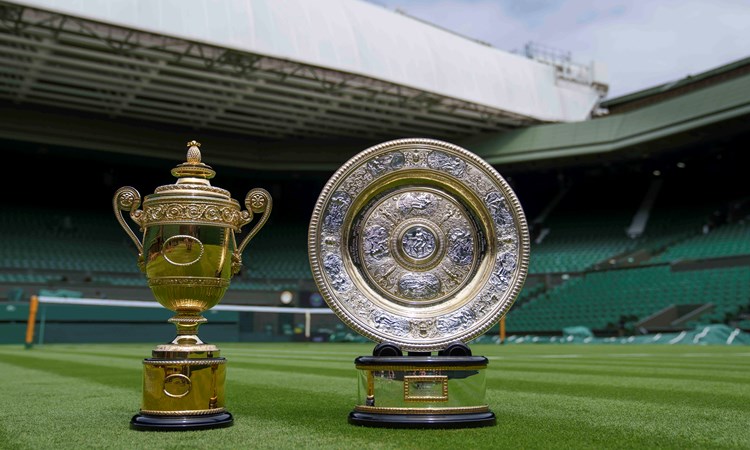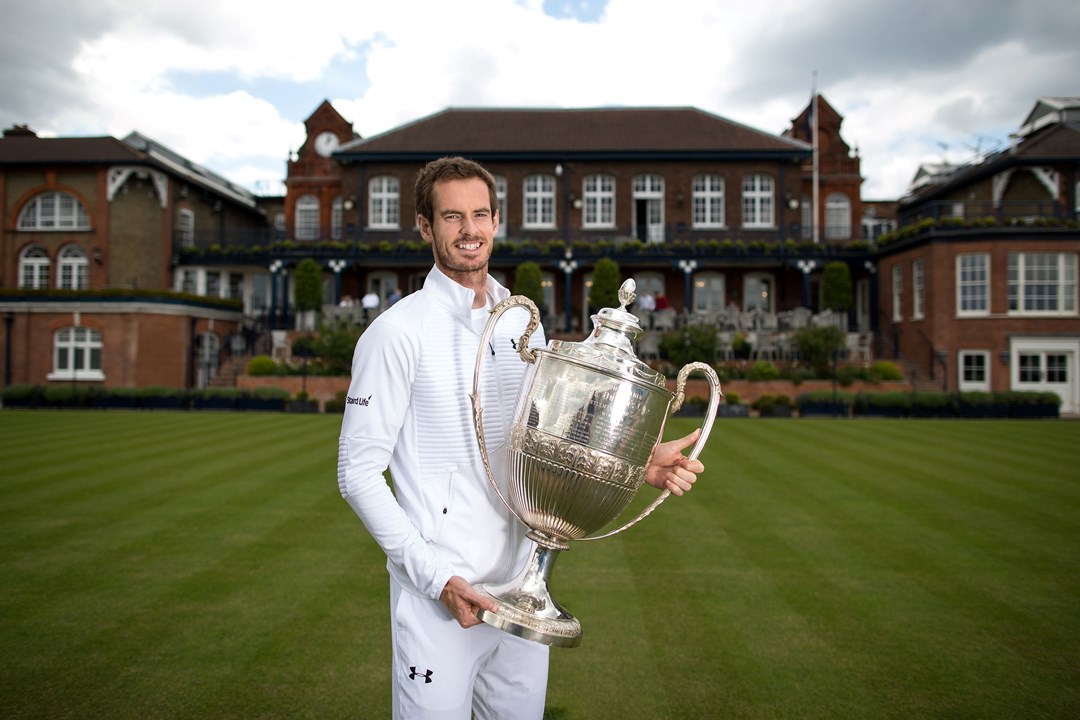
Andy Murray: The Queen’s Club’s greatest champion
• 4 MINUTE READ
Andy Murray and The Queen’s Club – a match made in heaven.
No player in history has bettered Murray’s six combined titles (five singles and one doubles) at ATP’s premier grass court event. Among the rest of his illustrious career accolades (becoming world No.1, winning three major titles and an Olympic gold medal to name a few), he will always be synonymous with the famous Centre Court at Queen’s.
Let’s just breakdown a few of Murray’s stats at Queen’s:
- Competed in 16 tournaments
- 41 singles matches played
- 32 total singles wins
- 5 singles titles
- 1 doubles title
- Undefeated in finals
- ... and hundreds of classic Murray moments
Pretty impressive, huh! Ahead of Murray returning to this year’s cinch Championships take a look back at Murray’s Queen’s Club highlights...
A debut to remember
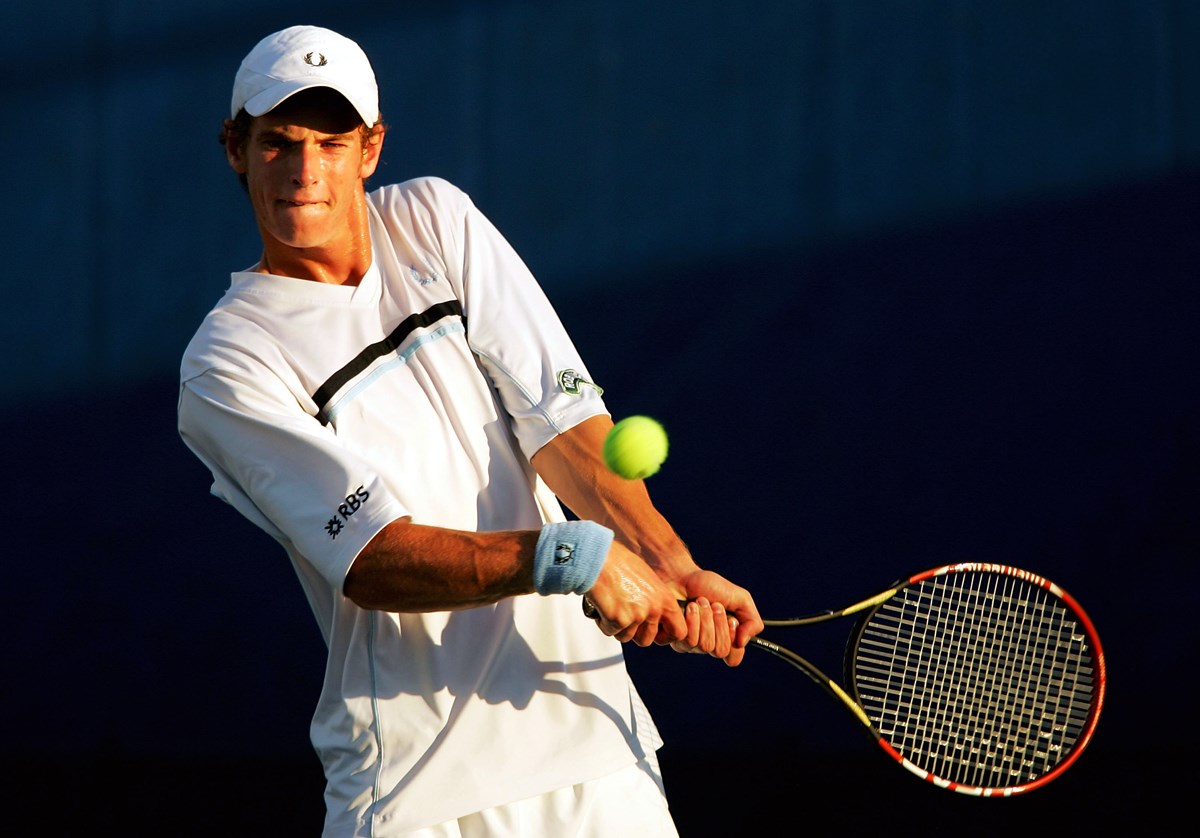
First, let’s wind the clock back to 2005 when an 18-year-old Murray first set foot at the Queen’s Club in search of his first ATP Tour win.
It didn’t take him long to seize his opportunity, as the young British wild card thrashed the world No.110 Santiago Ventura Bertomeu 6-1, 6-2 – announcing himself in front of the home crowd.
After crossing off a significant milestone in his career, Murray said, “This was a very important match for me - one of the biggest of my career” – little did we know what was to come next.
Murray caused a shock in the second round, knocking out big serving American Taylor Dent in straight sets, before setting up what would become one of the most iconic matches in Queen’s history against Thomas Johansson.
Despite Murray fighting back to level the scores at 7-6(1), 6-7(5), the Brit got cramp late in the decider as the Swede took the set 7-5 – completing his victory in two hours and 59 minutes. A disappointing loss for the 18-year-old, but the future certainly looked bright...
Record breaker
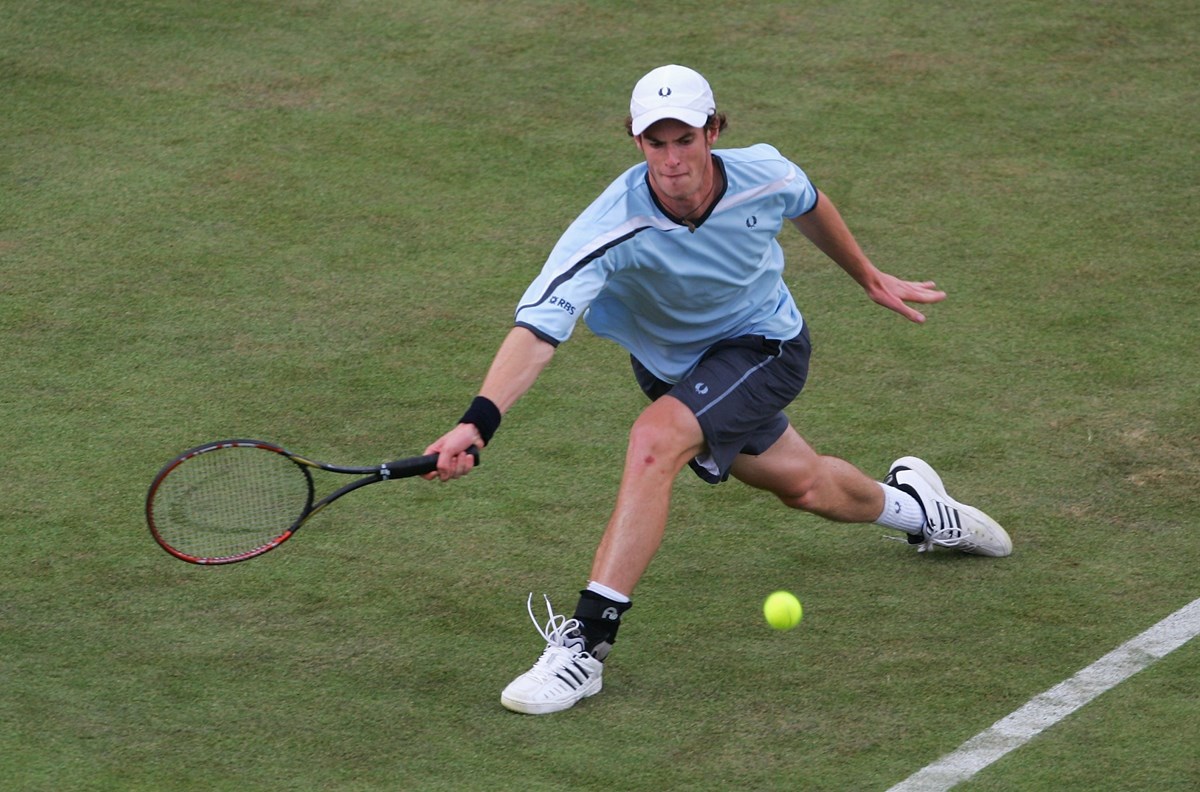
Murray returned to Queen’s in 2006 but didn’t make it past the first round after losing to Janko Tipsarevic in another three-set thriller.
British fans would then have to wait two years to see Murray again in 2008, but a lot had changed by that point in his career. Where he had been the young underdog in previous years, Murray was this time coming in as the sixth seeds and one of the hot favourites to compete for the title.
Claiming his first title in San Jose the year before and backing it up with trophies in St. Petersburg, Doha and Marseille – Murray had established himself as one of the biggest talents in the game.
He started strong in 2008, beating Sebastian Grosjean and Ernest Gulbis to reach the quarter-finals for the first time, but was forced withdraw due to injury, with a tasty match-up with four-time champion Andy Roddick on the cards.
Murray might have felt that he had a point to prove in 2009 and looked laser-focused from the get-go. Coming in as the top seed for the first time, he brushed aside Andreas Seppi 6-1, 6-4, followed by Guillermo Garcia Lopez (6-4, 6-4) and then Mardy Fish (7-5, 6-3).
Playing in his first Queen’s semi-final, Murray stepped up to the plate once again with yet another straight sets win over Spain’s Juan Carlos Ferrero.
History beckoned for Murray in the final and he answered the call. The world No.3 defeated James Blake 7-5, 6-4 to become the first Brit to win the title for 74 years (Bunny Austin), something Murray said had played on his mind in the final moments.
They were telling me yesterday that no one had won here for 70-odd years so that got the nerves going, especially when I was serving for the match.
An era of dominance
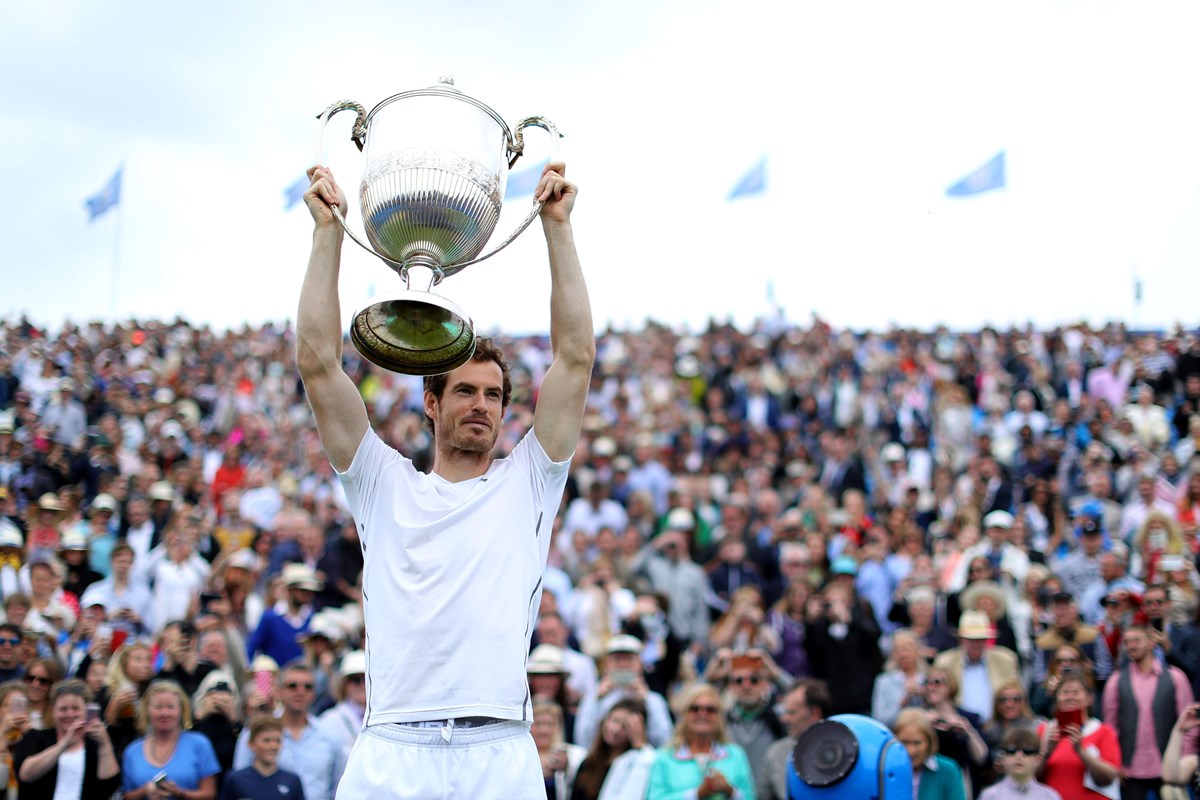
Between 2011 and 2016, Murray went on an incredible run in winning four out of six Queen’s singles tournaments to become the all-time leading champion.
In 2011, he made up for his injury withdrawal against Roddick in 2008 by defeating the American 6-3, 6-1 to reach his second final where he faced a familiar rival in Jo Wilfried Tsonga.
With rain delays throughout the Sunday, this would be only the third final to be played on a Monday in the history of the event. After going a set down, Murray showed nerves of steel to edge a second set tie-break and eventually round off a 3-6, 7-6(2), 6-4 win over the Frenchman.
Murray was dealt a shock defeat at the hands of Nicolas Mahut in the second round in 2012 before going on to reach his first Wimbledon final, but in 2013 everything came together for the British star.
He once again battled past Tsonga in three-sets to make his third Queen’s final, where he took down Marin Cilic in yet another Queen’s classic. An inspired Murray fought back from a set down to win 5-7, 7-5, 6-3 in two hours and 33 minutes. It was just weeks later of course that Murray took the final step in lifting the Wimbledon trophy – breaking more records in becoming the first Brit to do so since Fred Perry in 1936 after defeating Novak Djokovic in straight sets.
2016 marked a year of dominance for Murray. He became world No.1 for the first time, won an astonishing 78 matches and claimed nine ATP titles – including Queen’s.
Murray beat fellow Brit Kyle Edmund and Cilic again in three-sets to progress to the final. Keen to keep his 100% record in Queen’s finals alive, for a third time in his career Murray battled from a set down to beat Canada’s Milos Raonic 6-7(5), 6-4, 6-3 and in doing so, becoming the most successful playing in the tournament’s history.
In July Murray would then seal his second Wimbledon title, beating Raonic once again.
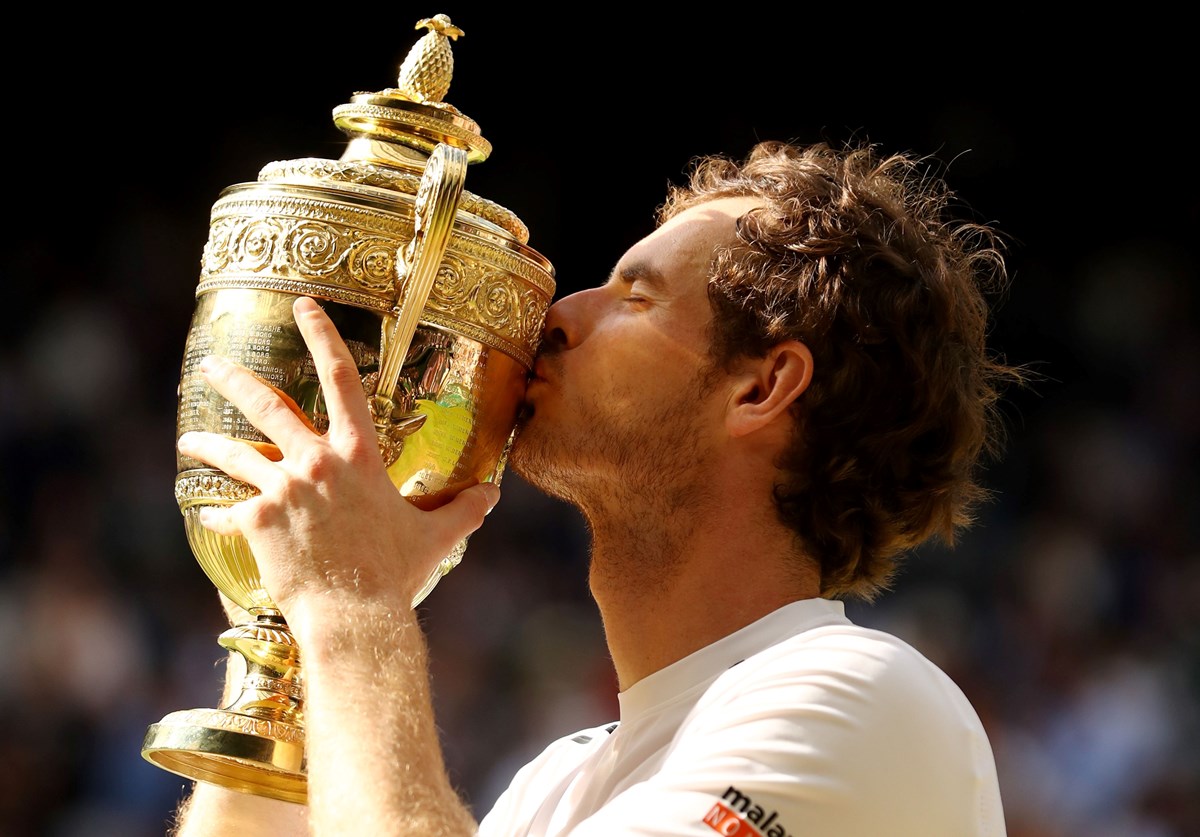
The return
In the years that followed, Murray was unfortunately hampered with injury setbacks, preventing him from performing at his best at Queen’s.
A long run at the French Open only weeks before, saw him lose to Jordan Thompson in the second round in 2017 and on his long awaited return from injury in 2018 he lost to Nick Kyrgios.
Continuing to struggle with injuries, Murray elected to only play doubles through the 2019 grass court season – forming a dream team partnership with Spain’s Feliciano Lopez.
In his first event coming off the back of hip surgery, Murray would win his sixth and latest Queen’s title. He and Lopez beat Brits Dan Evans and Ken Skupski in the quarter-finals before edging Henri Kontinen and John Peers in a match tie-break in the semis.
On finals day, Lopez returned after winning the singles final to become only the third person to complete the Queen’s double, as the British, Spanish duo beat the now world No.1 Joe Salisbury and Rajeev Ram 7-6(6), 5-7, 10-5.
Murray made his singles return to the cinch Championships in 2021, claiming a win over Benoit Paire in the opening round before losing to eventually champion Matteo Berrettini.
“I love it, I just love playing tennis,” said an emotional Murray after his first singles win at Queen’s since 2016.
“Competing is why you put in the hard work and the last few years I haven’t been able to do that as much as I’d like and it’s great that I’m out here. I want to make the most of every match that I play and each tournament that I get the chance to compete in.”
So what next for Murray and his love affair with the Queen’s Club? The six-time champion will return again in 2022 in a star-studded line-up that includes nine Brits across the singles, doubles and wheelchair events.
While we wait with anticipation for the drama to unfold, the one thing we know is you will not want to miss it...







